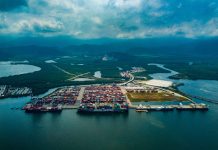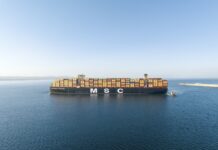
There is a real risk of labour disruptions in US East Coast ports, given the breakdown in negotiations between the union and the terminals in June, according to Baltic Exchange’s latest container shipping report.
Writing in the report, Vespucci Maritime CEO Lars Jensen said any strike in US East Coast ports will dramatically worsen the global supply/demand dynamics as it will create significant port congestion and vessel delays.
Jensen noted that when Ever Given got stuck in the Suez Canal, this triggered the second stage of rate increases (amid the pandemic and the 3Q peak) leading to extremely tight markets in late 2021 and early 2022 and record rates in the US$15,000 per FEU range on some trades.
He wrote: “Should there be a strike on the US East Coast in September, this could well trigger the same effect and market stakeholders would face a similar second phase, with rates once more reaching such record-high levels.”
The International Longshoremen Association (ILA), which represents some 85,000 port workers on the US East Coast and US Gulf, suspended talks with the US Maritime Alliance in June, due to a disagreement on automation. The current labour agreement expires on 30 September, and the ILA is also seeking salary increments of around 40%, citing liner operators’ huge profits.
In another Baltic Exchange report, Freightos’ research lead Judah Levine stated that Transpacific demand is expected to peak in August, and rates are likely to continue climbing. General rate increases and surcharges could push rates to about US$10,000/FEU. Yang Ming Marine Transport has already announced a US$2,000/FEU GRI from 1 August.
The ongoing Red Sea crisis will hold up tonnage, lending support to freight levels.
A resumption of Red Sea transits or a collapse in demand would see the reversal to overcapacity, but this appears unlikely in the short to medium term.
Jensen wrote: “It’s time for stakeholders to contemplate a scenario where the major container vessels continue around Africa not for a few more months but for several years to come. Conflicts in the Middle East tend to be resolved only on very long timescales and it is evident that the Western military presence has failed to change the situation in the southern part of the Red Sea and the Gulf of Aden. It’s possible that this could persist for several years to come and, as a consequence, shippers need to contemplate how to structure not only their supply chains but also their sourcing patterns should such a scenario unfold.”
Martina Li
Asia Correspondent





